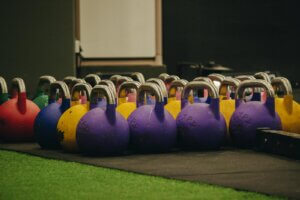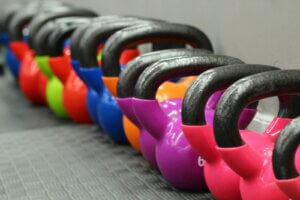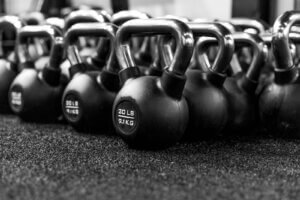How to Plank
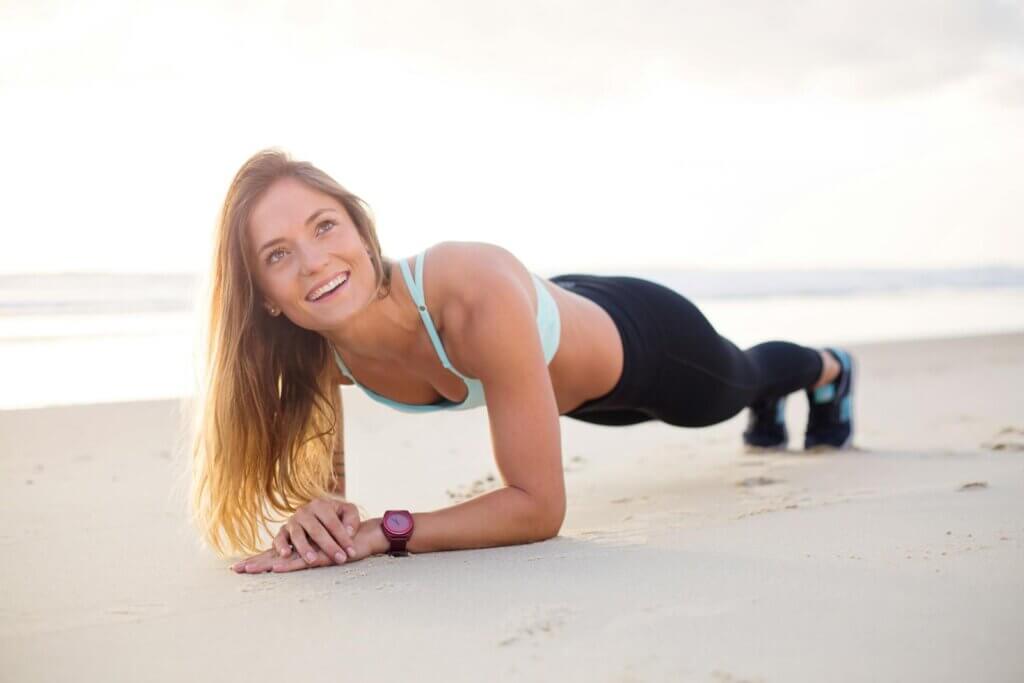
Introduction:
The plank hold is a fundamental core exercise prevalent in CrossFit and general fitness training. This isometric exercise, which involves maintaining a position similar to a push-up, is highly effective for building core strength and stability. Despite its simplicity, the plank hold can be quite challenging, offering benefits that extend beyond just the abdominal muscles. In this article, we will guide you through the plank hold, providing a step-by-step approach, equipment requirements, scaling options, common mistakes, benefits, and alternative exercises.
Steps in the Plank movement
Starting Position:
- Begin by lying face down on the floor or a mat.
- Place your forearms on the ground, ensuring that your elbows are directly under your shoulders.
- Extend your legs behind you, with your toes tucked under.
Engage Your Core:
- Lift your body off the ground by pressing into your forearms and toes.
- Keep your body in a straight line from head to heels.
- Engage your core muscles, pulling your navel towards your spine.
Maintain Alignment:
- Ensure that your back is flat and your hips are neither sagging nor piking.
- Keep your head in a neutral position, looking slightly ahead of your hands.
Hold the Position:
- Maintain this position for the desired amount of time, focusing on steady breathing and core engagement.
- Aim to hold the plank for 20 to 60 seconds initially, gradually increasing as you build strength.
Ending the Plank:
- To release, slowly lower your knees to the ground and rest.
What Equipment is needed
- Mat: A comfortable mat to cushion your forearms and toes.
- Timer: To track the duration of your plank hold.
While the plank exercise primarily requires no equipment, certain tools can enhance comfort, support, and effectiveness. A quality exercise mat provides cushioning for your forearms and toes, reducing discomfort during prolonged holds. For those looking to intensify their plank routine, equipment like the ABMILL Plank Trainer offers targeted support, promoting proper form and reducing joint stress. Additionally, devices such as the Pure Plank system introduce ergonomic features and progress-tracking capabilities, allowing for a more engaging and effective workout. Incorporating these tools can not only make planking more comfortable but also assist in achieving optimal results by ensuring correct posture and providing opportunities for progression.
Check out the Equipment subsite for more tools, tips, and inspiration.

Shop Fitness gear now on Amazon
See Amazons extensive range of workout gear here. (Affiliate Link)
Scaling Options:
To gradually build strength and proficiency, consider the following scaling options:
- Knee Plank: Perform the plank with your knees on the ground to reduce the load on your core and upper body.
- Elevated Plank: Place your hands or forearms on an elevated surface, such as a bench or step, to make the exercise easier.
- Shorter Holds: Start with shorter holds (e.g., 10-15 seconds) and gradually increase the duration as your strength improves.
Common Mistakes to Avoid:
- Sagging Hips: Keep your hips in line with your shoulders and heels. Engage your core to prevent your hips from sagging.
- Raised Hips: Ensure your body forms a straight line. Avoid raising your hips too high.
- Neck Strain: Keep your head in a neutral position, avoiding looking up or down excessively.
- Holding Breath: Remember to breathe steadily throughout the exercise.
Benefits of the Movement:
- Core Strength: Primarily targets the abdominal muscles, enhancing core stability and strength.
- Full-Body Engagement: Engages multiple muscle groups, including the shoulders, chest, back, and legs.
- Improved Posture: Strengthens the muscles responsible for maintaining good posture.
- Injury Prevention: Enhances overall stability, reducing the risk of injuries in other exercises and daily activities.
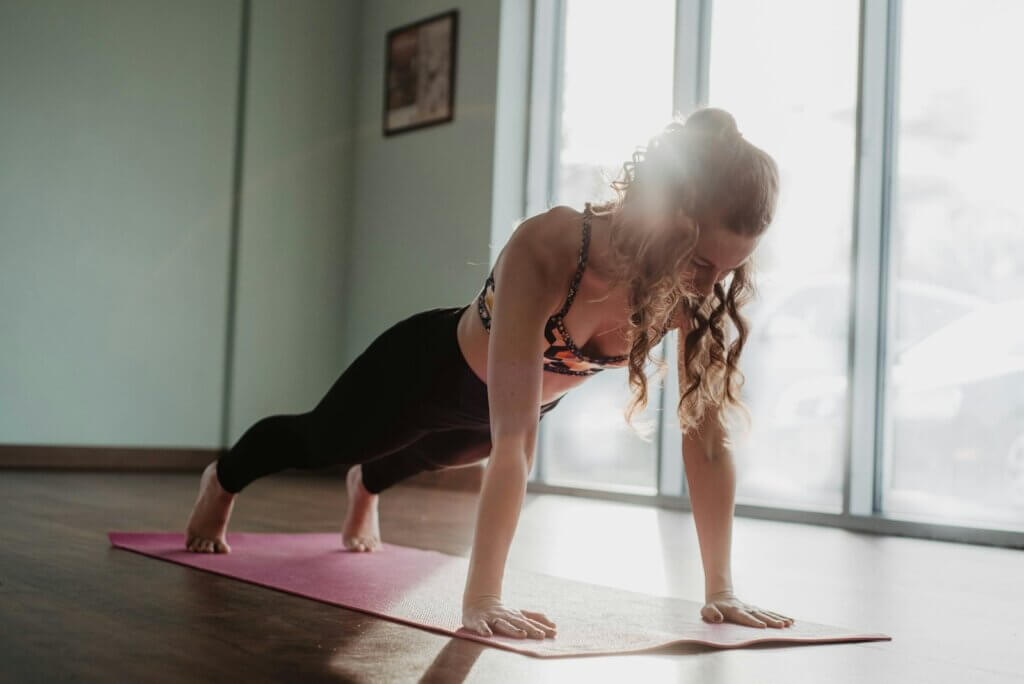
Which Muscles Are Worked:
During this exercise, the following muscle groups are engaged:
Primary Muscles: Rectus Abdominis, Transverse Abdominis, Obliques
Secondary Muscles: Shoulders (deltoids), Chest (pectorals), Back (latissimus dorsi), Glutes, Quadriceps
Alternative Similar Movements:
If you’re seeking variation or targeting specific muscle groups, consider incorporating these alternative exercises:
- Side Plank: Targets the obliques and improves lateral stability.
- Plank to Push-Up: Involves transitioning from a forearm plank to a push-up position, adding dynamic movement.
- Plank with Arm Lift: Lifting one arm at a time while holding the plank position to challenge balance and stability.
- Plank with Leg Lift: Lifting one leg at a time while maintaining the plank to engage the glutes and hamstrings.
Progressing Your Plank: Advanced Variations
Once you’ve mastered the basic plank, advancing to more challenging variations can further develop your core strength and overall stability. Incorporating exercises such as the side plank, which targets the obliques and enhances lateral stability, can diversify your routine. Additionally, the plank to push-up variation involves transitioning from a forearm plank to a push-up position, adding a dynamic element that engages the upper body and core muscles more intensely. These advanced variations not only prevent workout monotony but also promote continuous muscle development and functional fitness. Remember to approach these progressions gradually, ensuring proper form to prevent injury and maximize benefits.

Shop Fitness gear now on Amazon
See Amazons extensive range of workout gear here. (Affiliate Link)
Integrating Planks into Your Fitness Routine
Incorporating planks into your regular workout regimen can significantly enhance core stability and overall performance. Planks can be seamlessly added to both strength training and cardiovascular routines. For instance, including a 30-second plank hold between sets of weightlifting exercises can maintain an elevated heart rate while providing core engagement. Alternatively, integrating planks into a high-intensity interval training (HIIT) session can offer a low-impact yet challenging core workout. By strategically placing plank variations within your routine, you can target multiple muscle groups, improve endurance, and promote better posture. Consistency is key; aim to perform planks several times a week, gradually increasing duration and complexity as your strength improves.
Addressing Common Plank Challenges
Many individuals encounter specific challenges when performing planks, such as wrist discomfort, difficulty maintaining proper alignment, or premature muscle fatigue. To alleviate wrist pain, consider performing planks on your forearms or using supportive equipment like push-up bars to keep wrists in a neutral position. Maintaining a straight line from head to heels is crucial; engaging the core and glute muscles can help prevent sagging hips or raised buttocks. If muscle fatigue occurs quickly, start with shorter hold times, focusing on form, and gradually increase duration as endurance builds. Incorporating rest days and complementary exercises to strengthen supporting muscle groups can also improve plank performance over time.
The Role of Planks in Injury Prevention
Regularly performing planks can play a significant role in injury prevention by enhancing core stability, improving balance, and promoting better posture. A strong core acts as a stabilizer for the entire body, reducing the risk of falls and injuries during dynamic movements. Improved posture from consistent planking alleviates strain on the spine and associated muscles, decreasing the likelihood of back pain. Furthermore, the isometric nature of planks strengthens deep abdominal muscles that support the spine, providing a protective effect during daily activities and other forms of exercise. By integrating planks into your fitness routine, you not only build strength but also create a foundation that supports overall musculoskeletal health.
Q&A on Planking
How long should a beginner hold a plank?
Beginners should aim to hold a plank for 20 to 30 seconds initially. As they build strength, they can gradually increase the duration.
How do you do a plank correctly?
To do a plank correctly, maintain a straight line from head to heels, engage your core, and keep your elbows directly under your shoulders. Ensure your hips don’t sag or pike.
Does plank burn belly fat?
Planking helps strengthen and tone your core muscles, but it doesn’t directly burn belly fat. Combined with a healthy diet and cardio, it can contribute to overall fat loss.
Is one minute plank a day enough?
A one-minute plank a day is a good starting point for building core strength. As you progress, aim to increase the duration or incorporate plank variations for more challenge.
Is a 2 minute plank good?
Yes, holding a plank for 2 minutes is an excellent indicator of core strength and endurance. It shows good stability and muscle control.
Is a 3 minute plank OK?
A 3-minute plank is impressive and shows a high level of core strength and endurance. It’s a challenging goal that requires consistent practice.
How many calories does a 2 minute plank burn?
A 2-minute plank typically burns around 7 to 10 calories. The exact number can vary based on your weight and intensity.
What happens if you plank every day?
Planking every day can help strengthen your core, improve posture, and enhance overall stability. However, it’s essential to combine it with other exercises for a balanced routine.
What is a 1 minute plank equivalent to?
A 1-minute plank is roughly equivalent to doing several sets of traditional abdominal exercises, such as crunches, in terms of core engagement.
Does planking give you abs?
Planking strengthens and tones your core muscles, which can contribute to visible abs when combined with a healthy diet and overall fat reduction.
Is 30 second plank a day good?
A 30-second plank a day is a good starting point for beginners. As you build strength, aim to increase the duration for better results.
Are planks better than sit ups?
Planks are often considered better than sit-ups because they engage multiple muscle groups and put less strain on the lower back.
Can you do planks in bed?
While you can do planks in bed, it’s better to do them on a firm surface for proper support and alignment.
Is just planking enough?
Planking alone isn’t enough for a well-rounded fitness routine. Combine it with other exercises for full-body strength and conditioning.
Is a 5 minute plank good?
A 5-minute plank is very impressive and indicates exceptional core strength and endurance. It’s a challenging goal that requires dedication.
Is a 1 minute plank good?
Yes, a 1-minute plank is a solid benchmark of core strength for most fitness levels. It shows good endurance and muscle control.
How to get a flat stomach?
To get a flat stomach, combine core exercises like planking with a balanced diet, regular cardio, and overall strength training. Reducing overall body fat is key.
Conclusion:
By incorporating the plank hold into your routine, you can build a stronger core, enhance overall stability, and improve your performance in various physical activities. Remember to start with proper form and gradually increase the duration as you build strength and confidence. Happy planking!

Shop Fitness gear now on Amazon
See Amazons extensive range of workout gear here. (Affiliate Link)

🏋️ Written by: Mike Kerr
Mike is the founder of Strengthguides.com and a certified CrossFit Level 1 Trainer (CF-L1) and certified Kettlebell Instructor with over 10 years of experience in functional fitness. He specializes in developing programs that maximize performance without sacrificing mobility. Mike Kerr is passionate about making complex training methodologies comprehensible and safe for everyone.

